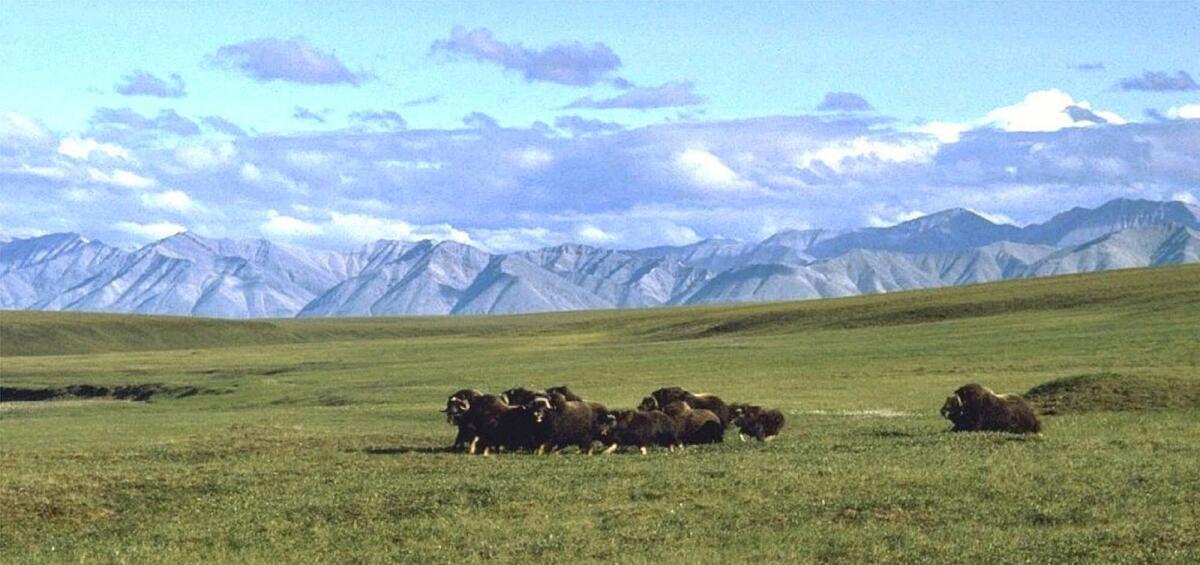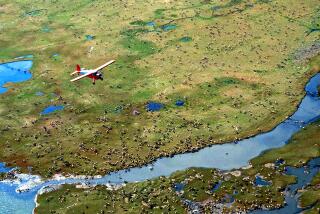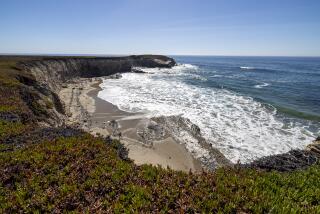Alaska governor launches bid to measure oil in Arctic refuge

- Share via
For decades, war has been waged over the holy grail of America’s Arctic frontier, the Arctic National Wildlife Refuge. The wide coastal plain on the edge of the Beaufort Sea contains stunning populations of caribou, grizzly, musk oxen and other wildlife -- and also an abundant pool of oil and gas.
While Congress has periodically taken steps to consider opening up oil and gas development in the refuge, President Obama and many congressional Democrats have rebuffed any drilling on what conservationists often call America’s Serengeti.
Alaska Gov. Sean Parnell, a Republican, launched a new bid Monday to at least determine what the argument is about. In a proposal to the U.S. Department of the Interior, Parnell said Alaska is willing to consider a $50-million contribution to launching a full oil exploration program in a section of the coastal plain, complete with modern 3D seismic studies.
The idea, Parnell said in an address to the U.S. Chamber of Commerce, is to determine the true extent of what is believed to be billions of barrels of recoverable oil to inform the debate on whether part of the coastal plain should be opened for drilling.
“The federal government cannot legitimately evaluate impacts unless it knows the breadth of the oil and gas resources it stands to recover for Americans’ benefit,” Parnell told chamber members in Washington, D.C., in a video address from Alaska.
“Once we know what oil and gas resources underlie the [plain] through this exploration proposal, we will have a more informed discussion about ANWR,” he said.
The 19-million-acre refuge lies east of the Prudhoe Bay oil fields, and federal officials initially contemplated some oil and gas development in a limited 1.5-million-acre coastal plain known as the 1002 area.
But so much of the American Arctic has been disrupted by oil production already that conservationists have argued vociferously for protecting the refuge, especially the coastal plain, which is a calving nursery for one of North America’s last great caribou herds.
Birds from all 50 states migrate annually to the refuge and to the other great Alaskan Arctic expanse, known as the National Petroleum Reserve-Alaska, which lies to the west of the Prudhoe Bay and Kuparuk oil fields. The Obama administration recently authorized only limited oil development to protect natural resources there.
The U.S. Fish and Wildlife Service, which is preparing a comprehensive conservation plan for the Arctic National Wildlife Refuge, received nearly 1 million comments and signatures urging it to recommend the coastal plain for official wilderness designation, which, if approved by Congress, would permanently take oil and gas development off the table.
“Raising this dead-end proposal ... is completely irrelevant in considering the future management of this special place,” Lydia Weiss, Arctic refuge campaign director for the Alaska Wilderness League, said in a statement responding to Parnell’s exploration proposal.
But a lobbying group pushing for expanded Alaskan oil and gas development, Arctic Power, said a large number of Americans want to access a potentially significant pool of domestic oil and gas to boost the nation’s energy security and generate new jobs and tax revenues.
The group says oil and gas development would affect only about 2,000 acres, or 1%, of the surface area of the coastal plain thanks to horizontal drilling. Parnell’s exploration plan quotes a Congressional Budget Office report last year that projected federal oil leasing revenues in the reserve of $1.3 billion to $8.3 billion, with royalties of up to $78 billion for the federal treasury.
The last assessment of ANWR’s oil reserves occurred in the 1980s and included much less sophisticated 2D seismic testing.
Parnell said if the federal government agreed to take on a new exploration program, he would request a $50-million allocation from the state Legislature to help pay for it.
“These numbers will confirm what I and many Alaskans have long believed and advocated, that ANWR’s energy resources are a major national asset, and development would provide immense benefits to our country,” he said.
The U.S. House of Representatives voted in February 2012 to open the refuge to drilling, but the Senate voted it down.
ALSO:
Vermont governor signs ‘death with dignity’ measure
Jodi Arias’ lawyers again ask to withdraw, judge again says no
He’s Sky Master at the Vegas Stratosphere: ‘I throw people off’
More to Read
Sign up for Essential California
The most important California stories and recommendations in your inbox every morning.
You may occasionally receive promotional content from the Los Angeles Times.










